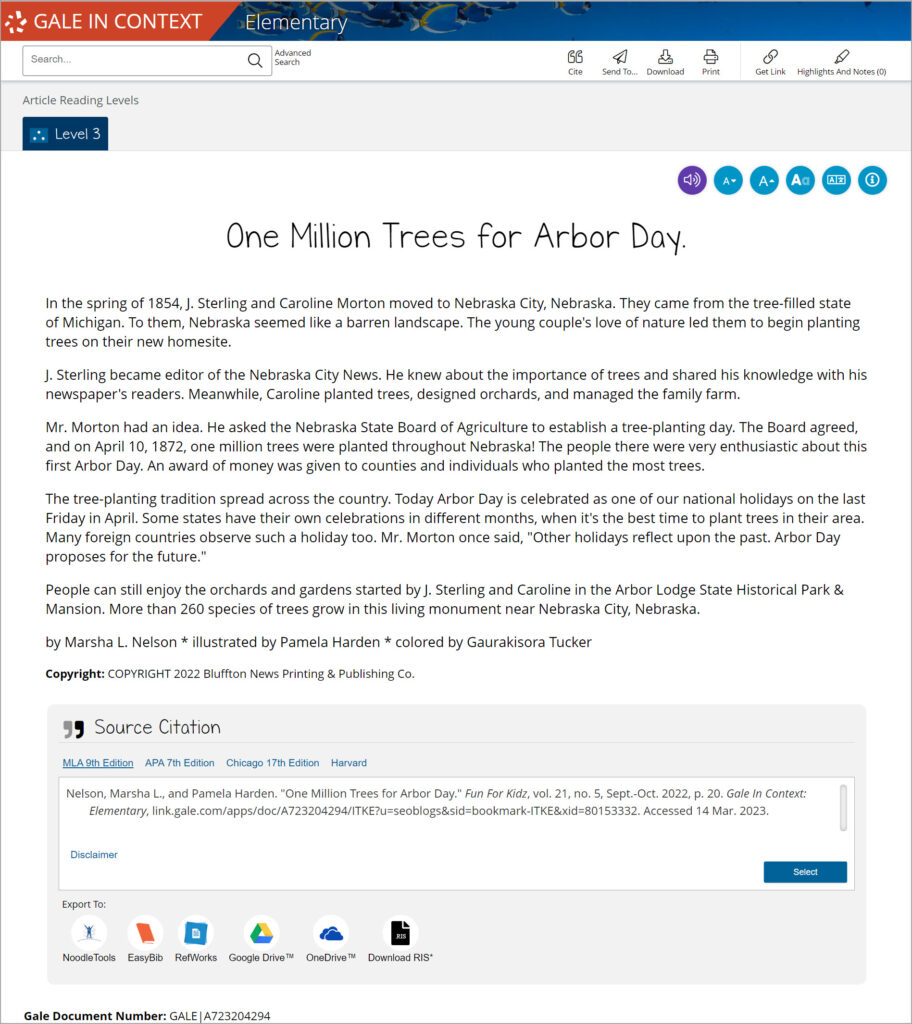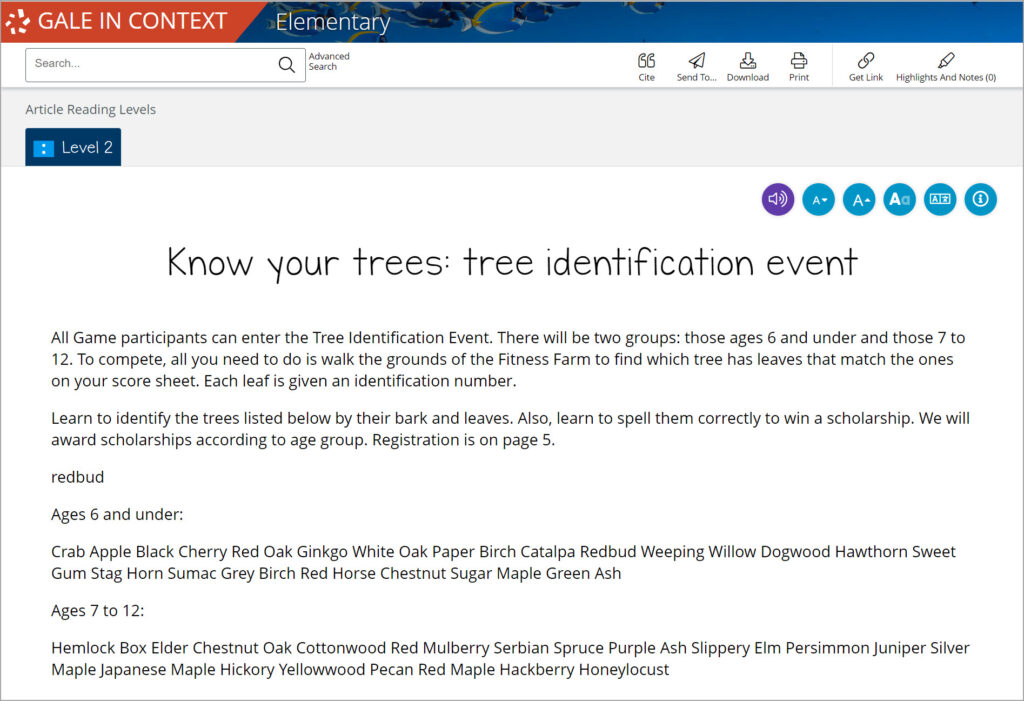| By Gale Staff |
The month of April marks both Earth Day (April 22) and Arbor Day (April 28). These two holidays create excellent bookends for a week dedicated to lessons and activities about our natural environment. Arbor Day, specifically, is a chance for young learners to participate in tree planting, a nature walk, or a similar activity that inspires appreciation for the trees in our communities. After all, trees are the lungs of the Earth!
Learn the History of Arbor Day
The history of Arbor Day is an interesting story. First observed in 1872 in Nebraska, it was a newspaper editor named J. Sterling Morton who had the idea for the holiday. He originally designed Arbor Day as a day dedicated to planting trees. In fact, for that first Arbor Day celebration, Nebraskans who planted the most trees were awarded prize money. Inspired by Morton’s mission (and likely incentivized by the prizes), Nebraskans planted more than a million trees on that first Arbor Day in 1872!

In your classroom, consider encouraging elementary learners to discover how it all began. You can design a brief research-style scavenger hunt about Arbor Day’s history and allow your students the freedom to explore articles and find the answers for themselves. Gale In Context: Elementary has dozens of book and magazine articles dedicated to Arbor Day. Plus, our elementary database is curated with young readers in mind, so resources are age-appropriate and crafted with simple sentence structures and vocabulary.
Develop Ideas for the Classroom
While it’s always fun to plan an actual tree planting for Arbor Day, there are plenty of simple ways to share the holiday with your class as well (after all, not every school has the space or means for a successful tree planting).
Make an Appreciation Tree
Grab some colorful construction paper and lots of markers. Cut brightly colored “leaves” from the construction paper and ask students to write (or draw) what they appreciate most about trees. Do they like to climb them? Do they enjoy reading a book in the shade of a tree in their yard? Perhaps they have a treehouse at home where they like to play. Using butcher paper or maybe some spare cardboard, create a bare tree so students can then glue their leaves to its branches. This is a fun, reflective, and artistic exercise that can be displayed in the classroom or perhaps the school library for others to enjoy as well.
Host an Arbor Day Story Hour
Gather your students together for Arbor Day storytime. You can choose from plenty of great tree-themed books (The Giving Tree, The Busy Tree, or The Lorax are all fun options). After reading, ask students what made the trees in the story so important. If the weather is nice, maybe even host your story hour outside under the shade of a tree on school property.
Create Fun Activities for Kids to Bring Home
Arbor Day can be celebrated by the whole family, so why not send your students home with additional activities to share?
Identify Trees at Home
Develop a list of common trees that grow locally in your community. Be sure to include a description of the leaves, the bark, and maybe a picture. Invite students to bring these tree identification sheets home and discover how many different trees are growing in their own backyard (or nearby park). Encourage students to ask their parents or guardians to help. Students can bring their tree identification sheets back to class and share what they found.

Grow a Tree From Seed
Gather some small planters (ask a local greenhouse or nursery if they have any plastic pots to donate, but cardboard cups work just as well). Have each student fill the planter with soil. Then, give each student a seed from a tree to plant within the soil. Have them water their seed with a spray bottle and keep their planters in the classroom for a few weeks until the seeds germinate. Encourage students to care for their little seeds every day. Once the seeds have sprouted, children can bring their baby trees home and continue to look after them. Once the tree begins to outgrow its planter, families can plant the tree at home.
Interested in discovering more ways to observe Arbor Day in your classroom? Explore more of the Arbor Day collection housed in Gale In Context: Elementary. If your institution doesn’t subscribe to Gale In Context databases, learn more about the kid-friendly student database today!

